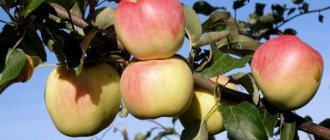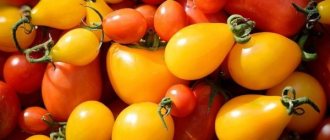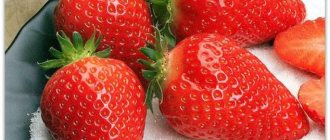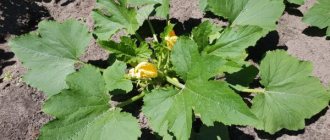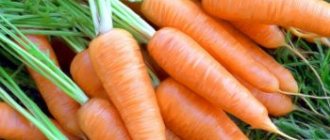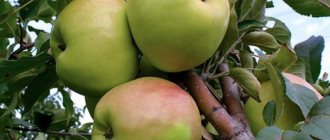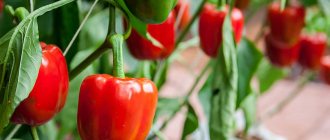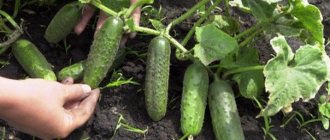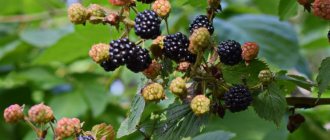Culinary use, advantages and disadvantages of culture
These peppers are versatile. They are stuffed, crumbled into summer and canned salads, used for various sauces and snacks, and stored in the freezer. However, the best way to use the early vegetable is fresh consumption.
Experts consider the following characteristics to be the advantages of pepper:
- Precocity. Under optimal conditions, the variety can even produce an early harvest.
- Stable increased productivity. The originator limits himself to such a description and does not provide precise information.
- Large fruit.
- Thickness.
- Good juicy taste. Increased content of vitamin C.
- Resistance to bad cool weather, lack of sunlight and diseases associated with these negative factors. Pepper does not reduce the rate of fruiting during unfavorable periods of summer.
Attention! Thanks to this latter quality, the hybrid is recommended for planting in the conditions of the Urals, Siberia, the North-Western region, the Far East and Primorye.
Cons of sweet peppers:
- hybrid nature - the crop is not available for propagation by seeds;
- lack of resistance to a number of diseases.
Varieties of sweet peppers adapted for cultivation in greenhouses
Pepper belongs to the category of nightshade crops, which means that the yield and stability of the bushes primarily depends on the condition of their root system. One of the most dangerous procedures is picking the roots when transplanting adult seedlings into separate holes. To avoid weakening the plant and not reduce its natural resistance to disease, it is necessary to sow seeds in separate small containers with opaque walls. The best option for such containers are peat cups.
Among the basic requirements for caring for grown seedlings, it is worth highlighting the maintenance of optimal soil moisture. At the same time, stagnation of water is not allowed, since it blocks the roots’ access to oxygen and provokes damage to the seed material. In order to grow strong, disease-resistant bushes, the seeds can be treated in advance with a light pink solution of potassium permanganate, dipping the seeds into it for 20 - 30 minutes.
An equally important point is the preventive treatment of the soil, which will eliminate the microbes and fungal infections present inside. To do this, sifted wood ash is added to the soil or steamed with a boiling bright pink solution of potassium permanganate.
The air temperature in the room where the container with soil and seeds is located should remain at 24 - 26 degrees Celsius. The soil into which the bushes will be transplanted must also be warm. Experienced gardeners recommend placing plastic bottles of water or stones on the beds themselves before planting seedlings. During the day they will heat up under the influence of sunlight, and at night the accumulated heat will be transferred to the ground.
If pepper is planted in open ground, work can be carried out only after the air temperature does not fall below 14 - 16 degrees Celsius. The optimal temperature regime for the growth and fruiting of peppers is the range from 24 to 28 degrees Celsius. That is why, to grow fruits in the Urals, it is necessary to choose varieties and hybrids that are resistant to possible cold snaps.
An equally important point concerns the preparation of the soil itself. It must have a neutral level of acidity, since the roots will not be able to develop normally, and the bush itself will not be able to form the ovaries of future fruits. The fact that the soil is highly acidic can be evidenced by the growth of plantain on it, as well as plants from the heather group.
If possible, it is necessary to normalize the acidity level in soils in early spring, before planting. In this case, the entire area must be dug up. Sifted wood ash can be used instead of lime. It is recommended to additionally fertilize the soil with humus or compost 2.5 - 3 weeks before planting grown seedlings.
Moderate soil moisture and sufficient lighting of plants are the main requirements not only in the process of developing bushes and growing fruits, but also at the stage of forming strong, disease-resistant seedlings. Watering should be regular but moderate. It is better to allow the soil to dry out a little more than to allow puddles and stagnant water to form. The second option blocks the roots’ access to the necessary oxygen and can trigger the onset of their deterioration, in particular, rotting.
When choosing a site for planting sweet peppers, you should focus on its full illumination by the sun and the obligatory absence of cold drafts and the presence of protection from gusty cold winds. During the hottest days, the soil can be mulched: it is covered with impermeable materials that do not let the sun's rays in, thereby preventing moisture from evaporating from the soil.
Variety Freshness
Several rules for sowing pepper seeds
In order for pepper seeds to germinate well and produce healthy seedlings, you must follow the basic rules of agricultural technology. Experienced gardeners advise doing the following:
- The last ten days of February is the best time to sow pepper seeds for Siberia. The choice of such an early date is determined by the long germination of seeds. The first shoots appear on the soil surface around the middle of the fourth week. Plus, to this time it is necessary to add 45 days of growth of the seedlings themselves before planting them in the ground.
- Growing peppers begins with choosing suitable varieties. We'll talk about them further. Seeds must be purchased in specialized stores. It is better if the gardener has his own seed material collected from last year’s harvest. Such grains have a high germination rate, since they have already adapted to local conditions. If you decide to grow hybrids, then you only have to buy such seeds.
- Even the highest quality seeds do not provide 100% germination. Bad grains are identified in salt water before planting. The consistency of the solution is prepared to approximately 5%, placing the seeds there for about 10 minutes. Good grains, under their own weight, will sink to the bottom of the container with salt water, and dummies will all float to the surface. They will need to be collected and thrown away.
- Salt water is drained along with good seeds through cheesecloth.
The grains remaining in the gauze are tied into a bag, washed with clean water, then dipped in a 5% manganese solution for half an hour. The prepared seeds are laid out on a plate covered with a cotton cloth or several layers of gauze, periodically moistening until they hatch. This usually occurs within a week. As soon as the grains have hatched and small embryos have appeared, they are planted in containers. The bottom of the container is covered with expanded clay. It is needed for drainage. It is better to buy prepared soil with nutrients ready-made. Important! Experienced gardeners advise sprinkling the surface of the soil in containers with wood ash. It will protect the seedlings from fungal diseases. - The seeds are placed in moist soil no deeper than 2 cm. It is optimal to cover the soil on top with a 5 mm layer of river sand. The containers are tightly covered with transparent film and placed in a warm, dark place.
After the sprouts appear, the film is removed from the containers and placed in a lighted place. Seedlings must receive maximum light, otherwise the plants will stretch.
In the video you can see the sowing of seeds:
Hybrids
They were specially bred to improve the qualities and characteristics of the crop; they are distinguished by high yields, adaptation to low temperatures and resistance to possible diseases and pests. Marked F1.
Related article:
Cool peppers: the five best thick-walled hybrids
White Lady (Belladonna)
It has large and fleshy fruits in the shape of a cube, the bush is distinguished by a strong stem and compactness. Color can vary from white to orange.
Grenada
An early, multiple-ovary, large hybrid. It has a rich color and excellent taste. Suitable for both greenhouses and open beds.
Casablanca
Friendly germination, light cream color of the fruit, thick walls make it one of the most popular hybrids. Widely used in conservation.
Flamenco
It has become in demand due to such characteristics as early ripening, productivity (until late autumn) and excellent presentation.
Claudio
One of the record holders for disease resistance, it is distinguished by early fruiting. The weight of one specimen can be up to 250 g. The time until the first harvest is 72-80 days. Not afraid of changing growing conditions and diseases. The erect stem reliably protects the ovary from sunburn and possible temperature changes.
Related article:
How to pick bell peppers correctly
Gemini
Belongs to the Dutch selection, perfectly adapted to the latitudes of the region. Early ripening - 72 days from the moment of transplantation into the greenhouse. Stress-resistant to various factors.
Orange bull
It is distinguished by high commercial qualities, however, the semi-standard type of bush (up to 1.1 m) requires certain care (support, tying). To obtain a large ovary, active formation of a bush of 3-4 stems is necessary, otherwise the vegetables will be small.
Montero
Very tall (up to 1.2 m) and productive (6-7 kg) bushes, require a support structure and garter, ideal for a greenhouse. Tasty and large fruits, the walls of the pulp reach a thickness of 7 mm.
